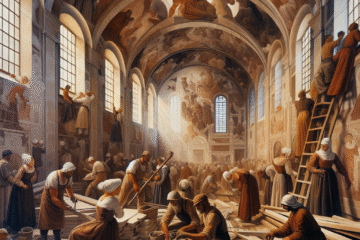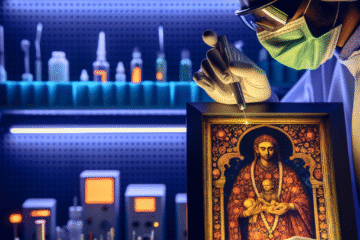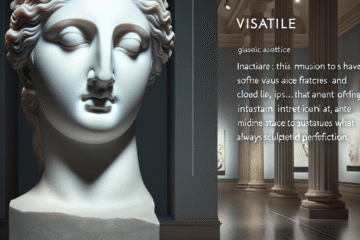Introduction: Earth’s Fiery Palette
The creative force of nature has long inspired human expression, but few elements have played as paradoxical a role in art as volcanoes. Both destroyers and givers, volcanoes have left behind not only reshaped landscapes but also pigments that have made their way into frescoes, canvases, and ceramics across millennia. From the ashen slopes of Vesuvius to the mineral-rich soil of Iceland, geologic catastrophes have birthed vivid colors that helped define artistic eras. This article explores how the fury of volcanoes translated into tools for beauty, symbolism, and technical innovation in the hands of artists.
1. Antiquity: The Birth of Artistic Earth
In the ancient world, artists were intimately connected with the earth, literally digging up the materials for their craft. Volcanic regions like Campania in Southern Italy provided not only fertile soils but also essential raw materials. One notable pigment is red ochre, often sourced from mineral-rich volcanic environments. Used in prehistoric cave art and Egyptian tombs, iron oxides, colored by heat and pressure from volcanic activity, gave early humans a way to record their world and their beliefs in permanent, powerful hues.
Moreover, the city of Pompeii, buried under volcanic ash in 79 CE, serves not only as a tragic historical testament but also as a palette preserved in time. Frescoes that survived the eruption exhibit an extraordinary range of colors derived from minerals like cinnabar (for red) and green earth, found in neighboring volcanically influenced geology. These images remind us how intertwined destruction and artistic creation can be.
2. Medieval and Byzantine Brilliance: The Alchemy of Color
As empires gave rise to organized religion, color assumed increasingly symbolic weight. During the Byzantine era, volcanic glass known as obsidian was not only a useful tool-making material but also ground into pigments. More prominently, lapis lazuli—a semi-precious stone formed in part through geologic heat and pressure associated with metamorphic zones—was imported from Afghanistan through volcanic mountain routes and ground into ultramarine, the most precious blue of the Middle Ages.
In illuminated manuscripts and mosaics, these rare volcanic-based pigments weren’t just decorative. They conveyed divinity, virtue, and omnipresence. Ultramarine was reserved for the robes of the Virgin Mary, highlighting how geology could inform theological meaning. The technological ingenuity required to process these materials reflected both scientific curiosity and an alchemical spirit that bridged geology and spirituality.
3. Renaissance Ingenuity: From Earth to Easel
The Renaissance marked a period in which artists became technicians, experimenting with materials as much as with perspective. Volcanic derivatives played a starring role in this artistic transformation. Naples Yellow, a pigment made from lead antimonate—a compound often found in volcanic fumaroles—became a staple in the palettes of artists like Titian and Vermeer. Known for its warm, mellow tones, it offered a durable and flexible yellow that revolutionized oil painting.
The expanding global trade routes also introduced artists to volcanic-based pigments from abroad, such as volcanic terra verde from Cyprus, which was used for underpainting skin tones. Artisans of this period didn’t merely employ these pigments; they studied them. Leonardo da Vinci’s notebooks, filled with observations on geology and color, suggest a mind profoundly curious about the way the Earth’s processes could be grasped, distilled, and transformed into enduring beauty.
4. Industrial Revolution and Scientific Artistry
By the 18th and 19th centuries, the Industrial Revolution brought both standardization and innovation to the making of pigments. Volcanic ash was studied for its pozzolanic properties, important in construction but also in ceramics and glaze production. Artists such as J.M.W. Turner and Caspar David Friedrich embraced the sublime in their depictions of volcanic landscapes, seeking emotional intensity echoed by the volatile forces of nature.
Simultaneously, scientific inquiry gave birth to synthetic versions of mineral pigments—imitations of those that once only came from rare volcanic materials. However, many artists continued to prefer the depth and complexity of natural pigments. Volcanoes, once appreciated only for the raw materials they provided, were now subjects themselves, as seen in Turner’s brooding depictions of Mount Vesuvius or the brilliant reds in Hiroshige’s woodcuts of Mount Fuji.
5. Contemporary Echoes: Sustainability and Reclamation
In the 21st century, artists and material scientists have returned to the Earth—not just for inspiration but also for sustainable alternatives to synthetic chemicals. Volcanic clay and ash are being used in ceramics and eco-friendly paints. Icelandic artist Olafur Eliasson has used volcanic ash in both installations and pigment production, emphasizing the intersection of environment, perception, and temporality.
Contemporary art also adopts a philosophical stance, questioning the anthropocentric view of natural disasters. Rather than seeing volcanoes merely as harbingers of drama or tragedy, today’s artists are exploring them as reminders of Earth’s processes and our role within them. The cyclical nature of destruction and creation becomes a metaphor echoed not just in the material but also in the themes of their work.
Conclusion: The Volcano as Muse and Medium
From prehistoric red ochres to the conceptual installations of modern ecological artists, volcanoes have served as chaotic midwives in the birth of art. Their byproducts—rich in minerals, tinted by tectonic heat—have offered artists not just colors but stories, symbols, and meaning. In the pigment’s path from catastrophe to canvas, we find a visual testament to resilience and the profound ways in which humanity transforms nature’s upheaval into enduring beauty.



